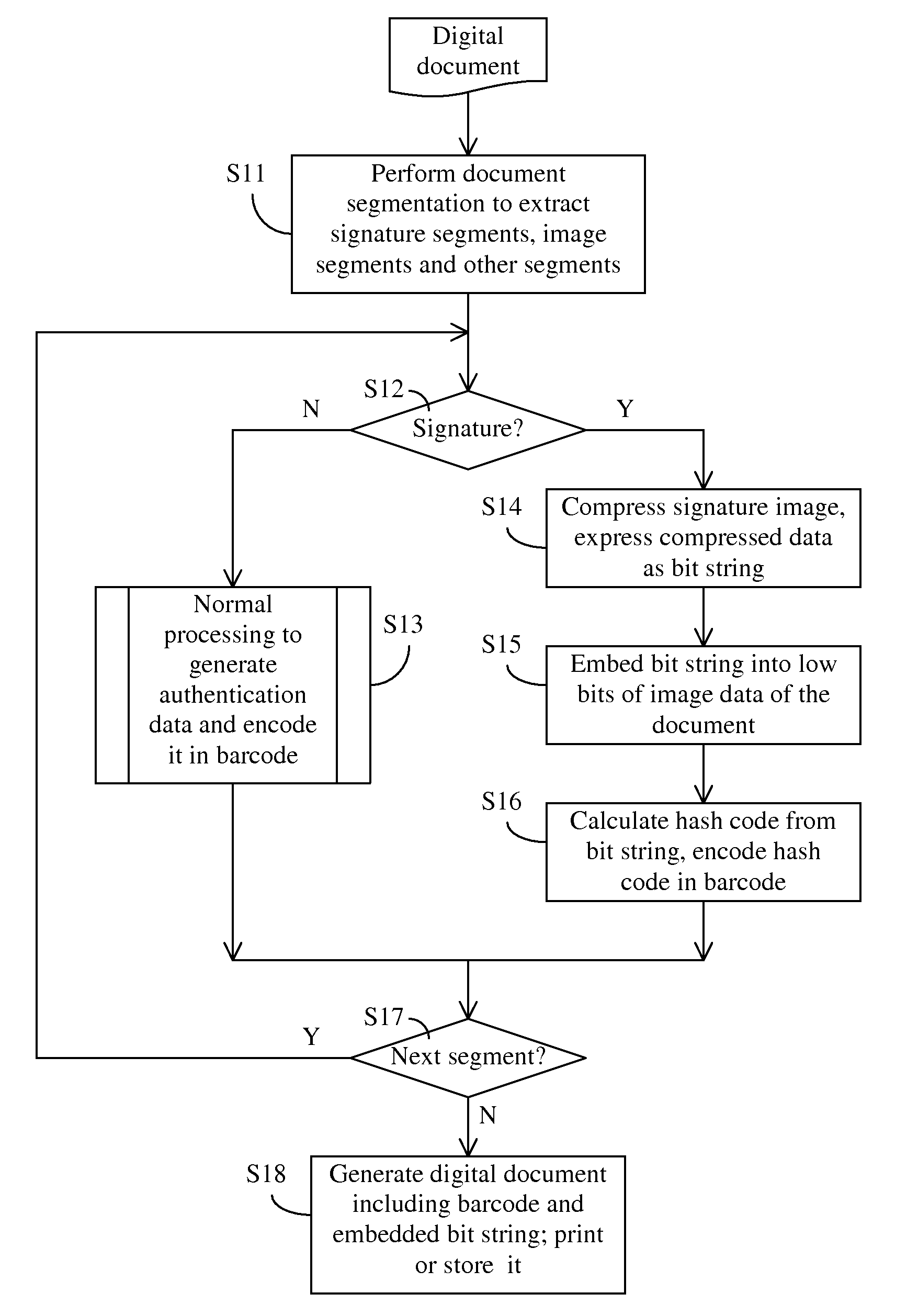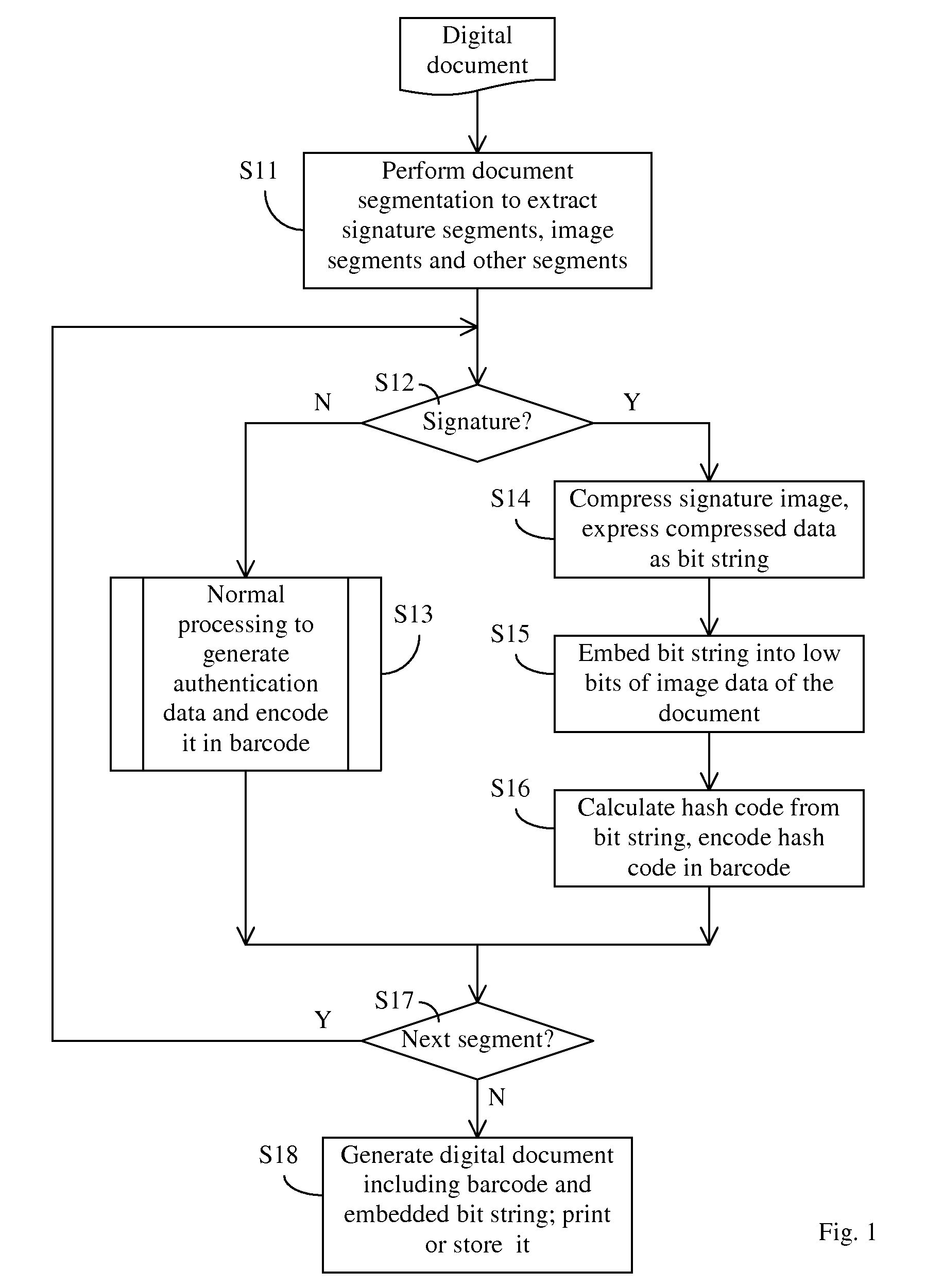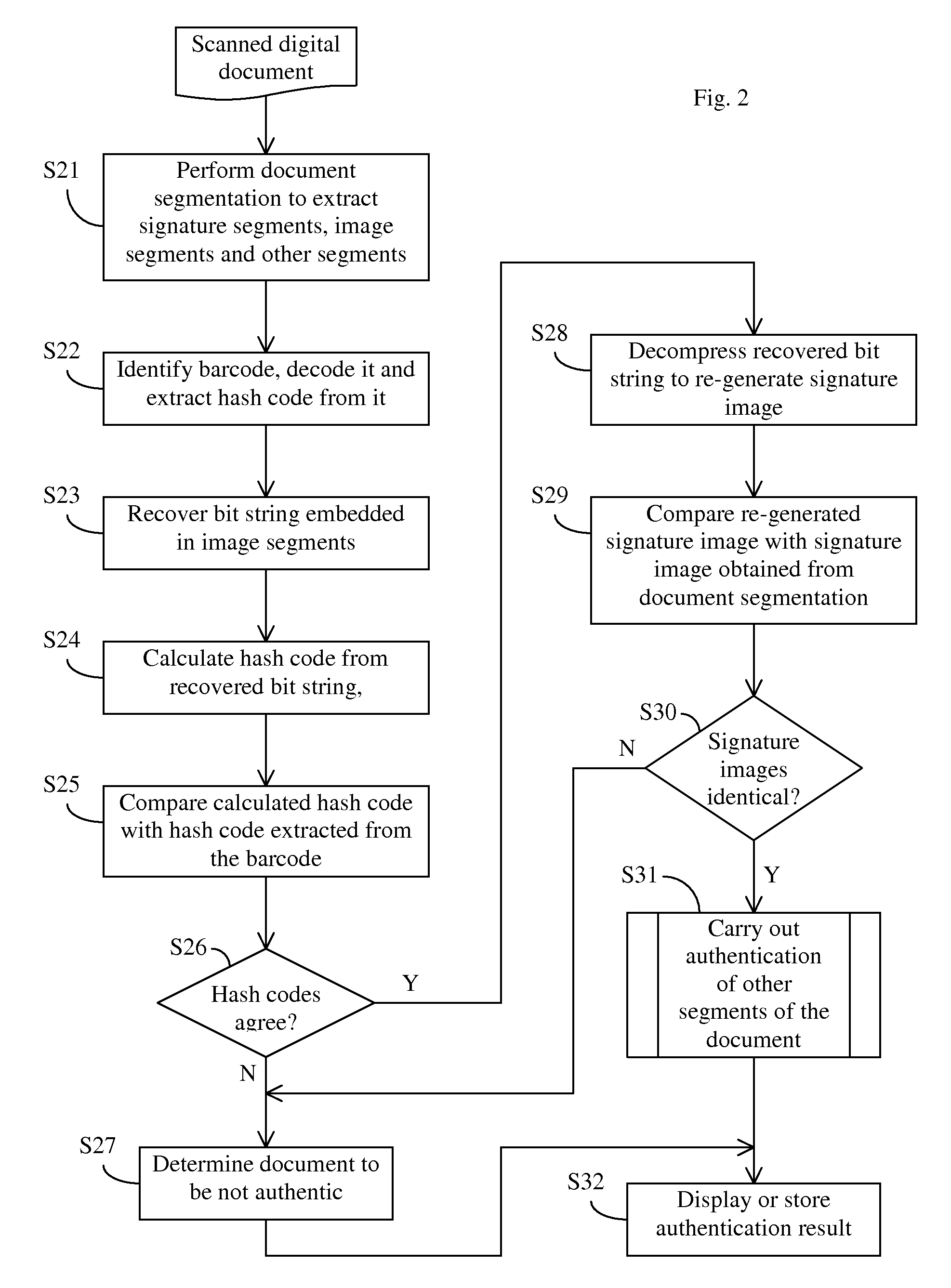Method of self-authenticating a document while preserving critical content in authentication data
a document and authentication data technology, applied in the field of document self-authentication, can solve the problems of unreliable comparison of extracted signature image with the signature on the scanned document, affecting the reliability of the authentication data, and affecting the accuracy of the authentication data
- Summary
- Abstract
- Description
- Claims
- Application Information
AI Technical Summary
Benefits of technology
Problems solved by technology
Method used
Image
Examples
Embodiment Construction
[0022]Embodiments of the present invention provide an improved document authentication method in which critical content, such as signatures in the document, is preserved at a high-resolution in the authentication data carried on the document.
[0023]In conventional document authentication methods, the size of the authentication barcode stamps is typically not sufficient to store authentication data at high resolution. As described earlier, conventional document authentication methods typically perform down-sampling of image data in order to convert it to authentication data to be stored in barcode. For certain critical content, such as signatures, down-sampling often leads to unsatisfactory authentication results.
[0024]According to embodiments of the present invention, when generating authentication data, critical contents such as signatures is processed without down-sampling, or down-sampled at a relatively high sampling rate, and compressed with relatively low compression ratio to p...
PUM
 Login to View More
Login to View More Abstract
Description
Claims
Application Information
 Login to View More
Login to View More - R&D
- Intellectual Property
- Life Sciences
- Materials
- Tech Scout
- Unparalleled Data Quality
- Higher Quality Content
- 60% Fewer Hallucinations
Browse by: Latest US Patents, China's latest patents, Technical Efficacy Thesaurus, Application Domain, Technology Topic, Popular Technical Reports.
© 2025 PatSnap. All rights reserved.Legal|Privacy policy|Modern Slavery Act Transparency Statement|Sitemap|About US| Contact US: help@patsnap.com



